-
 Bitcoin
Bitcoin $106,754.6083
1.33% -
 Ethereum
Ethereum $2,625.8249
3.80% -
 Tether USDt
Tether USDt $1.0001
-0.03% -
 XRP
XRP $2.1891
1.67% -
 BNB
BNB $654.5220
0.66% -
 Solana
Solana $156.9428
7.28% -
 USDC
USDC $0.9998
0.00% -
 Dogecoin
Dogecoin $0.1780
1.14% -
 TRON
TRON $0.2706
-0.16% -
 Cardano
Cardano $0.6470
2.77% -
 Hyperliquid
Hyperliquid $44.6467
10.24% -
 Sui
Sui $3.1128
3.86% -
 Bitcoin Cash
Bitcoin Cash $455.7646
3.00% -
 Chainlink
Chainlink $13.6858
4.08% -
 UNUS SED LEO
UNUS SED LEO $9.2682
0.21% -
 Avalanche
Avalanche $19.7433
3.79% -
 Stellar
Stellar $0.2616
1.64% -
 Toncoin
Toncoin $3.0222
2.19% -
 Shiba Inu
Shiba Inu $0.0...01220
1.49% -
 Hedera
Hedera $0.1580
2.75% -
 Litecoin
Litecoin $87.4964
2.29% -
 Polkadot
Polkadot $3.8958
3.05% -
 Ethena USDe
Ethena USDe $1.0000
-0.04% -
 Monero
Monero $317.2263
0.26% -
 Bitget Token
Bitget Token $4.5985
1.68% -
 Dai
Dai $0.9999
0.00% -
 Pepe
Pepe $0.0...01140
2.44% -
 Uniswap
Uniswap $7.6065
5.29% -
 Pi
Pi $0.6042
-2.00% -
 Aave
Aave $289.6343
6.02%
What does it mean that the OBV indicator hits a new high but the price is stagnant? Should I be vigilant?
When the OBV hits a new high but price stalls, it signals hidden strength or potential accumulation, often preceding a breakout in crypto markets.
Jun 14, 2025 at 12:01 pm
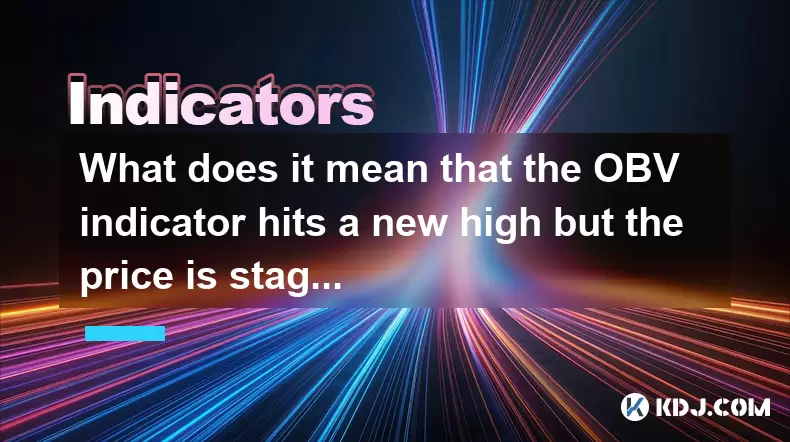
Understanding the OBV Indicator and Its Significance
The On-Balance Volume (OBV) is a technical analysis indicator that uses volume flow to predict changes in stock or cryptocurrency prices. It is based on the premise that volume often precedes price movement, making it a leading indicator rather than a lagging one. When the OBV hits a new high, it suggests that buying pressure is increasing even if the price does not reflect this surge immediately.
In the context of cryptocurrencies, where volatility and rapid shifts in sentiment are common, the OBV can be particularly useful. A rising OBV indicates accumulation — smart money or institutional investors may be quietly buying while retail traders remain unaware or skeptical.
What Happens When OBV Rises but Price Stalls?
When the OBV indicator reaches a new high while the price remains stagnant, it creates a divergence between volume and price action. This scenario typically signals a potential shift in market dynamics. The increase in volume implies growing interest, yet the lack of upward price movement suggests resistance or hesitation among sellers and buyers to push the price higher.
This divergence could mean several things:
- Accumulation is occurring at current levels.
- Market participants are waiting for a catalyst before committing fully.
- There might be strong selling pressure countering the buying momentum.
Cryptocurrency markets, known for their speculative nature, often experience such scenarios before significant breakouts or breakdowns.
Interpreting the Divergence: Hidden Strength or Warning Sign?
A rising OBV with a flat price can indicate hidden strength. If the volume is increasing without a corresponding rise in price, it may suggest that large players are accumulating assets without triggering a rally. This behavior is often seen as a bullish sign because once the asset breaks through resistance, a rapid ascent may follow.
However, caution is warranted. If the OBV continues to climb without any price reaction over an extended period, it could signal that the volume gains are artificial or manipulated, especially in low-cap or illiquid crypto projects. In such cases, the divergence might not lead to a breakout but instead result in a sharp correction once the imbalance corrects itself.
How to Confirm the Validity of the OBV Signal
To ensure you're interpreting the OBV divergence correctly, consider these steps:
- Check if other volume indicators like Chaikin Money Flow (CMF) or Accumulation/Distribution Line (ADL) confirm the OBV's behavior.
- Look for support and resistance levels on the price chart. Is the price testing a key level?
- Examine candlestick patterns during the OBV spike. Are there long wicks or engulfing candles indicating indecision?
- Use moving averages to assess whether the price is consolidating within a range or near critical trendlines.
- Monitor on-chain metrics like exchange inflows/outflows or whale movements for additional confirmation.
Each of these checks helps filter out false signals and ensures you're not acting on noise in volatile crypto markets.
Risk Management Strategies During OBV-Price Divergence
Even if the OBV seems promising, it's crucial to implement risk management strategies:
- Set tight stop-loss orders below recent swing lows to protect against sudden drops.
- Avoid over-leveraging your position until a clear breakout occurs.
- Consider scaling into positions gradually as the price confirms the OBV’s signal.
- Keep an eye on macroeconomic factors or news events that could influence the broader crypto market.
These precautions help mitigate risks associated with false breakouts or pump-and-dump schemes that sometimes exploit such technical setups in smaller-cap tokens.
Practical Steps to Analyze OBV and Price Behavior
If you’re observing a situation where the OBV hits a new high but the price isn’t responding, here’s how to proceed:
- Open your preferred trading platform and apply the OBV indicator to the asset chart.
- Zoom out to view historical OBV peaks and compare them with current readings.
- Identify whether the current price level has been tested multiple times recently.
- Overlay trendlines on both the price and OBV charts to spot divergences visually.
- Watch for a breakout above resistance or a breakdown below support as confirmation.
- Observe volume spikes during specific timeframes to see if they align with the OBV rise.
- Cross-reference with order book data if available, especially for altcoins traded on decentralized exchanges.
By following these steps methodically, you can better understand whether the divergence is a setup for a major move or just market noise.
Frequently Asked Questions
Q: Can OBV be used alone for trading decisions in crypto?
A: While OBV provides valuable insights into volume trends, relying solely on it is risky. Combine it with price action, other volume indicators, and fundamental analysis for more reliable signals.
Q: What timeframe should I use when analyzing OBV divergence?
A: Short-term traders may focus on 1-hour or 4-hour charts, while long-term investors should look at daily or weekly charts. Always match the timeframe with your investment horizon.
Q: Does OBV work equally well for all cryptocurrencies?
A: OBV works best with liquid and actively traded assets. For thinly traded or micro-cap tokens, volume data can be misleading due to manipulation or irregular activity.
Q: How do I know if the OBV spike is genuine or artificially inflated?
A: Compare the OBV with on-chain transaction volumes, exchange inflows, and social media sentiment. Sudden, unexplained surges without supporting fundamentals may indicate artificial inflation.
Disclaimer:info@kdj.com
The information provided is not trading advice. kdj.com does not assume any responsibility for any investments made based on the information provided in this article. Cryptocurrencies are highly volatile and it is highly recommended that you invest with caution after thorough research!
If you believe that the content used on this website infringes your copyright, please contact us immediately (info@kdj.com) and we will delete it promptly.
- 2025-W Uncirculated American Gold Eagle and Dr. Vera Rubin Quarter Mark New Products
- 2025-06-13 06:25:13
- Ruvi AI (RVU) Leverages Blockchain and Artificial Intelligence to Disrupt Marketing, Entertainment, and Finance
- 2025-06-13 07:05:12
- H100 Group AB Raises 101 Million SEK (Approximately $10.6 Million) to Bolster Bitcoin Reserves
- 2025-06-13 06:25:13
- Galaxy Digital CEO Mike Novogratz Says Bitcoin Will Replace Gold and Go to $1,000,000
- 2025-06-13 06:45:13
- Trust Wallet Token (TWT) Price Drops 5.7% as RWA Integration Plans Ignite Excitement
- 2025-06-13 06:45:13
- Ethereum (ETH) Is in the Second Phase of a Three-Stage Market Cycle
- 2025-06-13 07:25:13
Related knowledge

How to confirm the effectiveness of the average price line support in the time-sharing chart?
Jun 17,2025 at 12:56am
Understanding the Time-Sharing Chart and Its RelevanceIn cryptocurrency trading, time-sharing charts play a crucial role in analyzing short-term price movements. These charts typically display price fluctuations over a specific period, often ranging from minutes to hours. Traders rely on them to make quick decisions based on real-time data. The average ...

What does it mean when the momentum indicator breaks above the zero axis?
Jun 17,2025 at 12:43am
Understanding the Momentum IndicatorThe momentum indicator is a technical analysis tool used to measure the speed or velocity of price movements in cryptocurrency markets. It helps traders identify potential trend reversals, overbought or oversold conditions, and confirms existing trends. The indicator typically oscillates around a zero line, with value...
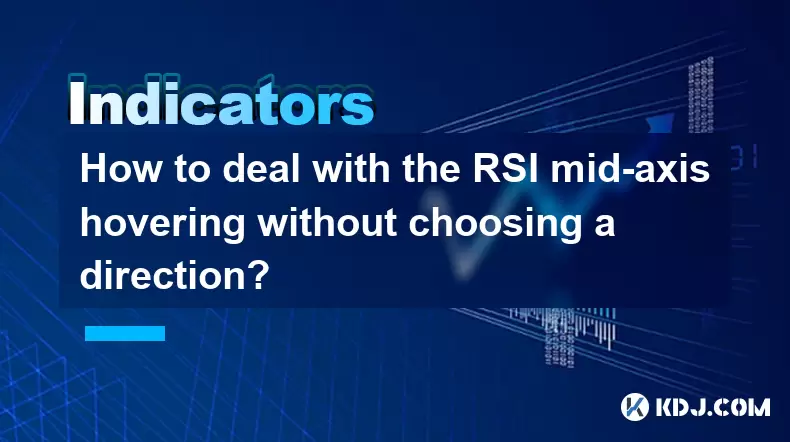
How to deal with the RSI mid-axis hovering without choosing a direction?
Jun 17,2025 at 02:02am
Understanding RSI Mid-Axis Hovering in Cryptocurrency TradingThe Relative Strength Index (RSI) is a popular momentum oscillator used by traders to assess whether an asset is overbought or oversold. In cryptocurrency markets, it's common for the RSI to hover around its mid-axis, typically at the 50 level, without showing a clear upward or downward trend....
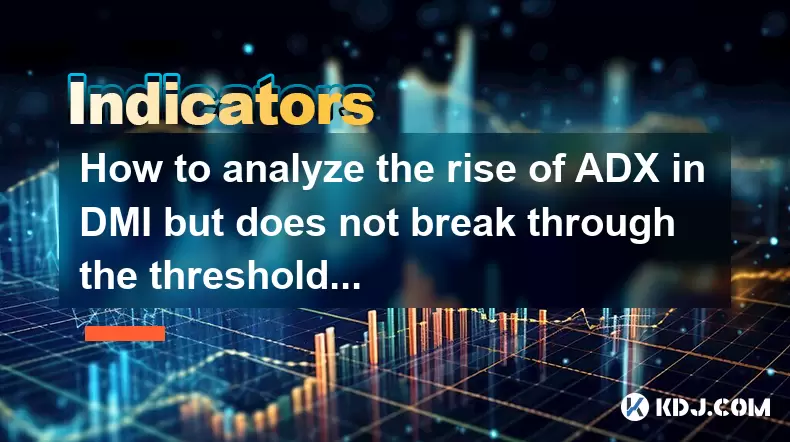
How to analyze the rise of ADX in DMI but does not break through the threshold?
Jun 16,2025 at 11:49pm
Understanding ADX and DMI in Cryptocurrency TradingIn cryptocurrency trading, ADX (Average Directional Index) is a technical indicator used to measure the strength of a trend. It works in conjunction with the DMI (Directional Movement Indicator), which includes two components: +DI (Positive Directional Indicator) and -DI (Negative Directional Indicator)...
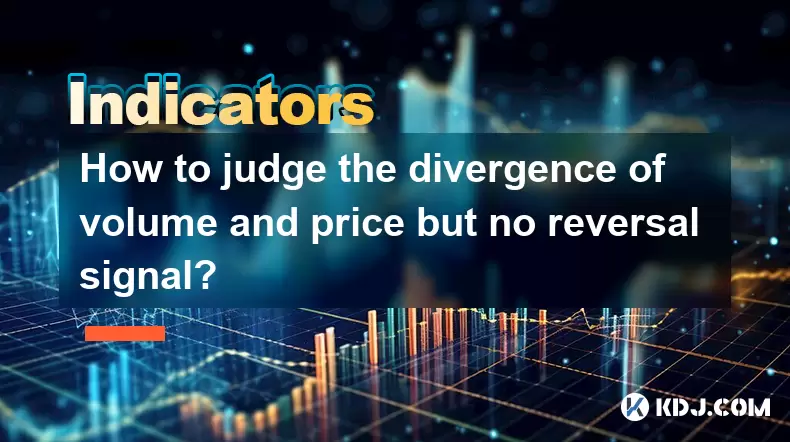
How to judge the divergence of volume and price but no reversal signal?
Jun 17,2025 at 12:28am
Understanding Volume and Price DivergenceIn the world of cryptocurrency trading, volume and price are two key indicators that traders monitor closely. Divergence occurs when these two metrics move in opposite directions. For example, if the price of a cryptocurrency is rising but its volume is declining, this could signal weakening momentum. However, it...
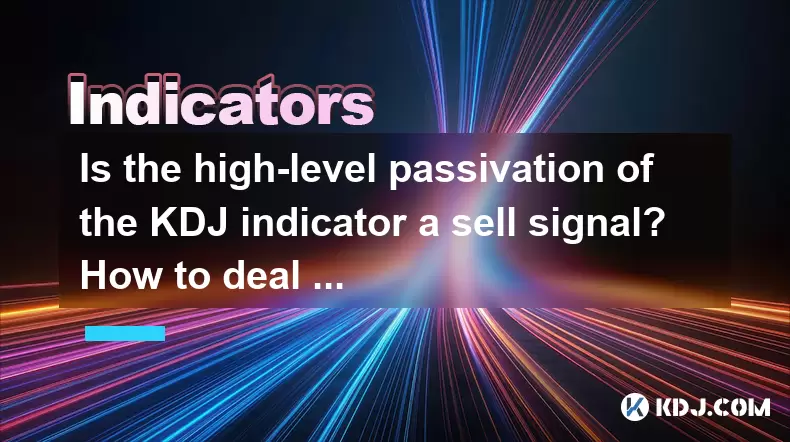
Is the high-level passivation of the KDJ indicator a sell signal? How to deal with it?
Jun 17,2025 at 12:49am
Understanding the KDJ Indicator in Cryptocurrency TradingThe KDJ indicator, also known as the stochastic oscillator, is a momentum-based technical analysis tool widely used in cryptocurrency trading. It consists of three lines: the %K line, the %D line, and the %J line. These lines help traders assess overbought or oversold conditions, potential trend r...

How to confirm the effectiveness of the average price line support in the time-sharing chart?
Jun 17,2025 at 12:56am
Understanding the Time-Sharing Chart and Its RelevanceIn cryptocurrency trading, time-sharing charts play a crucial role in analyzing short-term price movements. These charts typically display price fluctuations over a specific period, often ranging from minutes to hours. Traders rely on them to make quick decisions based on real-time data. The average ...

What does it mean when the momentum indicator breaks above the zero axis?
Jun 17,2025 at 12:43am
Understanding the Momentum IndicatorThe momentum indicator is a technical analysis tool used to measure the speed or velocity of price movements in cryptocurrency markets. It helps traders identify potential trend reversals, overbought or oversold conditions, and confirms existing trends. The indicator typically oscillates around a zero line, with value...

How to deal with the RSI mid-axis hovering without choosing a direction?
Jun 17,2025 at 02:02am
Understanding RSI Mid-Axis Hovering in Cryptocurrency TradingThe Relative Strength Index (RSI) is a popular momentum oscillator used by traders to assess whether an asset is overbought or oversold. In cryptocurrency markets, it's common for the RSI to hover around its mid-axis, typically at the 50 level, without showing a clear upward or downward trend....

How to analyze the rise of ADX in DMI but does not break through the threshold?
Jun 16,2025 at 11:49pm
Understanding ADX and DMI in Cryptocurrency TradingIn cryptocurrency trading, ADX (Average Directional Index) is a technical indicator used to measure the strength of a trend. It works in conjunction with the DMI (Directional Movement Indicator), which includes two components: +DI (Positive Directional Indicator) and -DI (Negative Directional Indicator)...

How to judge the divergence of volume and price but no reversal signal?
Jun 17,2025 at 12:28am
Understanding Volume and Price DivergenceIn the world of cryptocurrency trading, volume and price are two key indicators that traders monitor closely. Divergence occurs when these two metrics move in opposite directions. For example, if the price of a cryptocurrency is rising but its volume is declining, this could signal weakening momentum. However, it...

Is the high-level passivation of the KDJ indicator a sell signal? How to deal with it?
Jun 17,2025 at 12:49am
Understanding the KDJ Indicator in Cryptocurrency TradingThe KDJ indicator, also known as the stochastic oscillator, is a momentum-based technical analysis tool widely used in cryptocurrency trading. It consists of three lines: the %K line, the %D line, and the %J line. These lines help traders assess overbought or oversold conditions, potential trend r...
See all articles

























































































